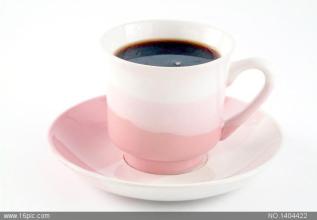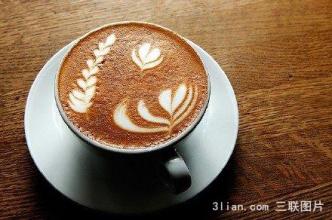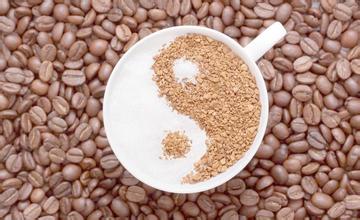The ratio of freshly ground coffee beans to water.-do coffee beans drink directly after grinding?
The ratio of freshly ground coffee beans to water.-do coffee beans drink directly after grinding?
In terms of actual cooking, the time required for ESPRESSO machines to make coffee is very short, so the grinding is the finest, and the coffee powder is as fine as flour; it takes about 1 to 3 minutes to siphon to cook coffee, and the coffee powder is ground to medium-thick; American coffee pots and hand-brewed bubbles are generally coarse and fine as sugar. The proper grinding degree of coffee powder is very important for making a good cup of coffee, because the extraction of water-soluble substances in coffee powder has its ideal time, if the powder is very fine and steamed for a long time, resulting in excessive extraction, the coffee may be very bitter and lose its aroma. On the other hand, if the powder is coarse and cooked too fast, resulting in insufficient extraction, the coffee will be tasteless because it is too late to dissolve the water-soluble substance in the powder.
The formation and density of bean groups of different varieties in different production areas are different, and different baking degrees will also cause a distinction in hardness, resulting in angry changes in the grinding rate and particle size. In the past, the bean powder thickness scale, powder quantity, powder pressing strength appears to be a little powerful, which seems that you can't put your wife's shoes on your feet. Therefore, many restaurants at home will use a fixed grinder for fixed beans in order to ensure that the grinding results will be shaken as far as possible.
Grinding thickness, electric to commonly used little flying eagle and small flying horse is more common, it is a relative standard, each is not each, the grinding degree of each bean grinder is different, hand 4-5 degrees (depending on the powder thickness is different) law pressure 5 degrees, the same type of bean grinder in the same factory can not take the scale as the standard, the French kettle is generally 10g per person, it should be easier to find on the adjusting plate. Add 8-10g for each additional cup of 12-15g per person, which can be fine-tuned according to the condition of your machine. In general, 8-10g powder is used in a single bowl of espresso, the strength of the powder and the freshness of coffee beans, the wear degree of the grinding plate of the bean grinder are different, and the degree of baking can be said to be a variable within a certain range. The bean grinder used by the Italian coffee machine has to be fine-tuned every day, and the mocha pot can fill the powder trough to 89 minutes full, siphon generally 10-12g per person, and there will be a median on the Italian bean grinder. Double bowls usually use 14-16g. The temperature of the water at which coffee is made. Other brewing methods do not need to use Italian bean grinder. Powder quantity, manual most have no scale, siphon pot is generally 3 degrees, mocha pot 2 degrees, but the relative value should be adjusted according to their own habits and bean grinder conditions, brewing time and powder quantity. Each quantity has a certain amount of controllable space, but after each quantity changes, the other quantities have to change accordingly, so if you really want to master brewing skills, you can only rely on experience.
Why is it different when you change beans? Is it bad for beans?

Important Notice :
前街咖啡 FrontStreet Coffee has moved to new addredd:
FrontStreet Coffee Address: 315,Donghua East Road,GuangZhou
Tel:020 38364473
- Prev

Introduction of coffee bean roaster structure map degree brand taste grinding scale production area variety
Coffee bean roaster structure map degree brand taste grinding scale production area variety introduction baking process will produce a series of chemical changes. After about 5-25 minutes of baking (depending on the temperature selected), the green coffee beans lose some humidity and turn yellow. In the process, coffee beans swell, changing from a sturdy, high-density raw bean to a low-density one.
- Next

Introduction to the differences and characteristics of deep roasting and shallow baking of coffee beans
The difference and characteristics of deep roasting and light roasting of coffee beans introduce the origin of Ethiopian century-old coffee TOMOCA mocha beans: Ethiopia Ethiopia cooked beans, harar-long bean roasted very authentic, full-bodied and irritating. Coffee roasting is very interesting, easy to learn but not easy to go deep into. It is a field that is easy to learn but difficult to master. Humans have thousands of things about wine and tea.
Related
- Guji coffee producing area of Guji, Ethiopia: Humbela, Shakiso, Wulaga
- What is the most expensive variety of Qiloso in BOP multi-variety group?
- How to store the coffee beans bought home?
- Why are Yemeni coffee beans so rare now?
- Ethiopian Sidamo all Red Fruit Sun Sun Santa Vini Coffee beans
- SOE is mostly sour? What does it mean? Is it a single bean? what's the difference between it and Italian blending?
- Is Italian coffee beans suitable for making hand-brewed coffee?
- How to choose coffee beans when making cold coffee? What kind of coffee beans are suitable for making cold coffee?
- Just entered the pit to make coffee, what kind of coffee beans should be chosen?
- Can only Japan buy real Blue Mountain Coffee? What are authentic Jamaican Blue Mountain coffee beans?

